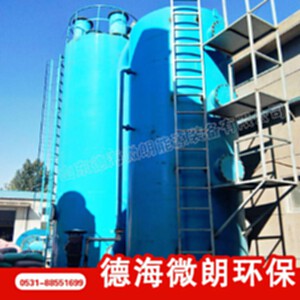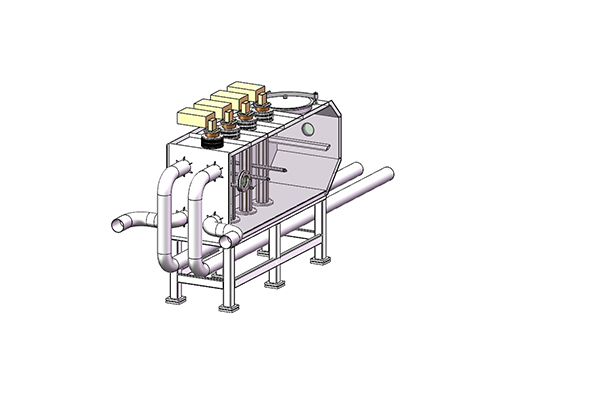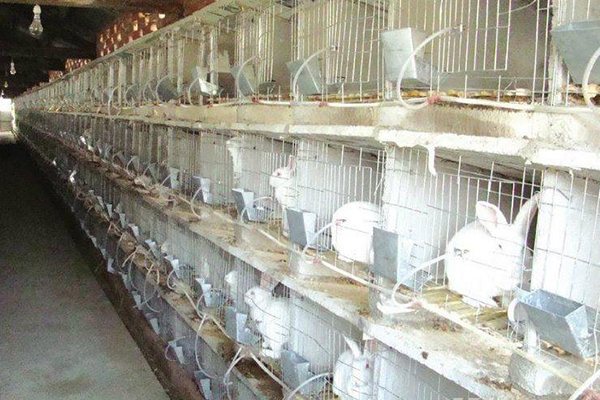
The sterilization principle of the microwave ultraviolet water treatment equipment is mainly to use the irradiation intensity of the ultraviolet lamp, that is, the radiation intensity emitted by the ultraviolet sterilization lamp, which is inversely proportional to the distance of the irradiated disinfectant. Therefore, when the irradiation reaches a certain level, the disinfectant it is exposed to will stay longer, and the closer it is to the sterilization lamp, the better the sterilization effect will be, otherwise, the worse it will be. So, what are the sterilization principles and application characteristics of the submerged microwave ultraviolet water treatment equipment? Now, let's discuss it with you! After absorbing ultraviolet rays, microorganisms will cause some changes in the structure of nucleoprotein molecules in their own cells, resulting in protein denaturation and breakage on the DNA chain, as well as destruction of cross links in DNA molecules, hydration on cytosine and uracil, and even dimers on adenosine, Because dimerization destroys the normal pairing of purine and pyrimidine, it changes the biological activity of DNA. As a result, the metabolism of microorganisms will be hindered, and they cannot proliferate, produce cells and destroy them; Causes the synthesis of proteins and enzymes in bacteria to be blocked, production Microwave drying of cereals As a result, the structure and function will be changed and destroyed, which will lead to the death of microorganisms and achieve the purpose of disinfection and sterilization. Experiments have proved that UV is the most bactericidal in the range of 240nm to 280nm, especially when the wavelength is 253.7 μ m, Microwave drying of cereals programme The germicidal effect of ultraviolet radiation is the best. Because a section of C frequency in the ultraviolet ray is very effective in destroying harmful bacteria or viruses. Because UV can kill bacteria, molds, viruses, unicellular algae and other organisms, UV is the preferred equipment for sterilization in the microwave UV water treatment equipment industry.

Microwave electrodeless ultraviolet sterilization equipment can destroy the molecular structure of DNA (deoxyribonucleic acid) or RNA (ribonucleic acid) in the cells of microbial organism by using ultraviolet light of appropriate wavelength, production Microwave drying of cereals Cause growth cell death and (or) regenerative cell death to achieve the effect of sterilization. The microwave electrodeless ultraviolet sterilization equipment should be one of the equipment in the system before the water returns to the aquarium. It should be preceded by biological and mechanical filters, as well as any chemical filters or heat exchangers in the system. Microwave drying of cereals programme Follow the manufacturer's installation instructions. Most devices use hose barb connectors to connect to the appropriate water pump, or are designed to allow additional connectors to be connected as PVC sliding fit or hose barb. To ensure microwave electrodeless ultraviolet sterilization

The catalytic combustion equipment for waste gas treatment is mainly used as a supporting part of the catalytic bed electric heating oxidation combustion system in the CO/RCO adsorption+desorption+catalytic combustion system. It is widely applicable to the purification and odor elimination of hazardous waste gas volatilized or leaked from painting, printing, household appliances, footwear, plastics and various chemical workshops, and is suitable for low concentration (1501000) The organic waste gas that is not suitable for direct combustion or catalytic combustion and recovery treatment will be concentrated by activated carbon adsorption, and then the high concentration organic waste gas will be removed through the desorption procedure and sent to the unit for thermal oxidation reaction. The self heating effect of the organic waste gas catalytic reaction can greatly reduce the heat consumption of the electric heater, especially for the treatment sites with large air volume, Satisfactory economic and social benefits can be obtained. Application scope of exhaust gas catalytic combustion equipment: 1. Industrial applications: common pollutants discharged from petrochemical, light industry, plastics, printing, coating and other industries; 2. Waste gas type application: hydrocarbon compounds (aromatics, alkanes, olefins), benzene, ketones, phenols, alcohols, ethers, alkanes and other compounds; Features of catalytic combustion equipment for waste gas treatment: 1. Convenient operation: fully automatic control during operation. 2. Low energy consumption: during normal operation, the equipment operates at low power (or no power) because the exhaust gas has some concentration. 3. Stable performance: pressure relief and self protection, fire resistance and dust removal, over temperature alarm and automatic control. 4. Low resistance: honeycomb ceramic catalyst impregnated with today's advanced precious metal palladium and platinum has a large specific surface area. 5. Small floor area: only 70% of the same products in the same industry. 6. Long service life: the catalyst is usually replaced within 4 years

Ultraviolet is a kind of light wave invisible to the naked eye, which exists outside the ultraviolet end of the spectrum, so it is called ultraviolet. Ultraviolet ray is one of the electromagnetic waves radiated by the sun. It is a special form of material operation, which is a flow of particles that are not connected. Each UV photon with a wavelength of 253.7 nm has an energy of 4.9 eV. When ultraviolet rays irradiate microorganisms, energy transfer and accumulation will occur, and the accumulation results in the inactivation of microorganisms, thus achieving the purpose of disinfection. When bacteria and viruses absorb more than 3600~65000uW/cm2, it has a strong destructive power on DNA and RNA of bacteria and viruses, and can make bacteria and viruses lose their viability and fecundity, thus eliminating bacteria and viruses, production Microwave drying of cereals Achieve disinfection and sterilization effect. On the one hand, ultraviolet light can mutate nucleic acids, hinder their replication, transcriptional blockade and protein synthesis; On the other hand, the production of free radicals can cause photoionization, which will lead to cell death. Microwave drying of cereals programme The sterilization principle of the microwave ultraviolet water treatment equipment is to use the irradiation intensity of the ultraviolet lamp, that is, the irradiation intensity emitted by the ultraviolet sterilization lamp, which is inversely proportional to the distance of the irradiated disinfectant. When the irradiation intensity is constant, the longer the residence time of the irradiated disinfectant is, the closer it is to the sterilization lamp tube, the better the sterilization effect will be. On the contrary, the worse the sterilization effect will be. This equipment can be used in direct drinking water equipment to obtain good water purification effect.



